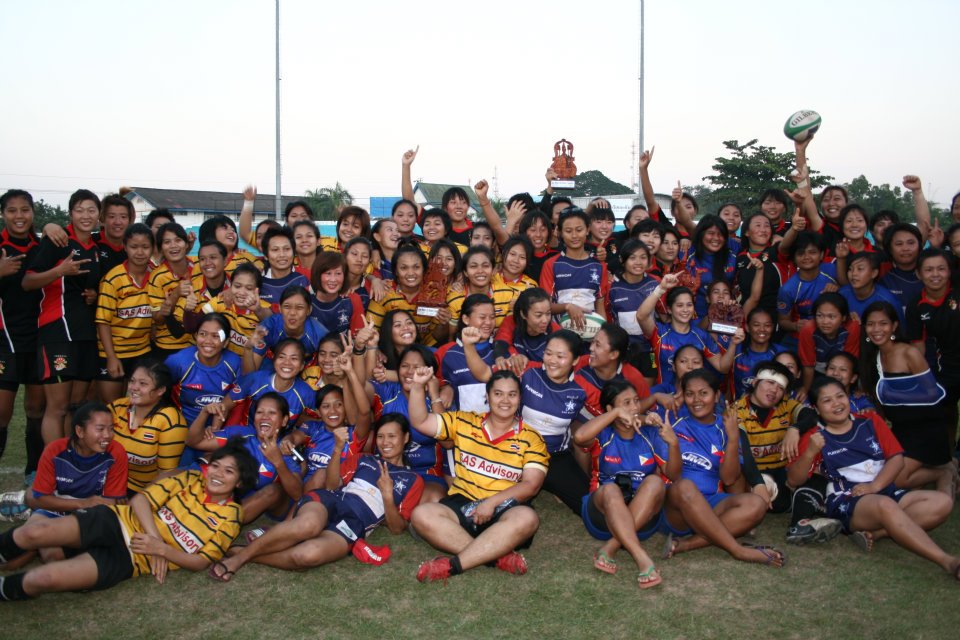Asian test championship: China are back!
By John Birch
Published by Alison Donnelly, November 30, 2011
6 minute read

In 2006, out of no-where, Chinas womens rugby team exploded onto the world of Asian rugby.
They blew away all opposition at that years Asian Championship, and would have done so again in 2007 had not Kazakhstan stopped them in the final. Then, just as suddenly as they had appeared, China vanished again as the prospect of Asian and Olympic Games gold changed priorities to the sevens game.
Now, four years later, China are back. The occasion for their return was slightly lower key than in 2006, however the first Asian Division II Championship for the continents developing nations but their dominance of the tournament should give Division I nations pause for thought (and, before you ask, there is no Division I tournament this year).
It is to the Asian Rugby Unions credit that they are concentrating on developing and broadening the game on their continent. The Division II tournament stems from developments in South-East Asia that began with 7s and 10s rugby in the latter half of the last decade, expanded to a development weekend (hosted by Laos, and attended by Thailand and the Philippines) in October 2010, and grew again last weekend into a full three game test-match tournament for the same three nations, plus China.
It was a tough tournament perhaps the toughest element being that it was played over three days. Three tests in three days. Admittedly the playing time was reduced a little, but even so three hours of competitive international rugby would be daunting for anyone. And that before the hot, dry conditions of Chao Anou Vong Stadium in Vientiane temperatures around 30 in the shade (rather hotter on the field!) on each day. The Philippines on their own finished their three days with a medical scorecard consisting of one broken clavicle, one fractured collarbone, one MCL tear, and nine stitches - plus a gazillion bruises and scrapes - but were still full of smiles and pride in their achievements.
But that is to jump ahead. Play began on the afternoon of the 24th October, with Laos opening the tournament (and becoming the 57th womens test nation) against Thailand, who they had beaten in a training game last year. Unfortunately for the determined and enthusiastic (but physically diminutive) home team, this was a rather different story. Shocked by the pace and strength of their opponents Laos were four tries down at half-time, but never gave up and restricted their opponents to a final score of 38-0.
A few minutes later the Philippines became test team no. 58, and had a similar experience as their hosts. Up against a Chinese team based around their successful sevens squad, the much less experienced Lady Volcanoes held out for 15 minutes before a well-weighted kick downfield saw the Chinese break the deadlock. This began a period of dominance by the physically much larger Chinese team, who went into the break 24-0 ahead. However, the Filipino team rallied well in the second half, conceding only two more tries (the second from the final play of the game), and even threatening the Chinese line on occasions.
Twenty-fours hours later, and Laos and the Philippines exchanged opponents with similar outcomes. Laos again played bravely but were overwhelmed by China, losing 66-0. Philippines did better against Thailand, but their opponents seemed to take full advantage not only of their easier opening fixture but also inexperienced match officials who were not having their best day (to quote the Filipino report). The result was another brave Philippines performance, but a 39-0 defeat.
Both of the new test sides scored their first test points on the final day, playing for third place. Philippines Aiumi Ono took the honour of scoring her teams first test match points after 10 minutes, and the visitors went into the break 15-0 ahead. Laos were not finished, however, and fought back to 15-12 before Aiumi scored her second try and made the game safe. This cleared the way for the final, and a slight anti-climax after the earlier exciting battle, China rarely being threatened on their way to a 38-0 win.
In three games China scored 140 points and conceded none. They were on a different level to the other teams in terms of strength, size and experience and must now go on to challenge the likes of Japan, Hong Kong and Kazakhstan at the top level of Asian rugby. They have the resources to reach the top - maybe even a place in the WRWC in France is not impossible if they want it. But will Olympic sevens gold be the higher priority?
As for the other three teams, if commitment and enthusiasm were enough on their own then they too would be competing for the top. They have great potential at sevens, but the increased physical demands of the fifteen-a-side game remains a real barrier to these physically smaller teams.